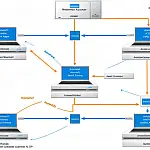Using C# to Add ODBC System DSN to Connect to System ODBC DatasourceHow to add an ODBC System DSN data source on the fly with C# without having to enter Windows Control Panel to configure DSN manually.
This snippet creates a wrapper function to the Microsoft ODBC interface to add ODBC System DSN. You can extend this to include other database drivers in addition to MS Access 2000.
What is ODBC System DSN?
ODBC stands for Open Database Connectivity and is a standard interface for accessing database management systems. ODBC allows applications to access many different database implementations without writing special code for each one.
Using C# to Add ODBC System DSN
using System;
using System.Collections.Generic;
using System.Text;
using System.Runtime.InteropServices;
namespace ConsoleApplication1
{
class Program
{
static void Main(string[] args)
{
bool success = Utils.CreateDataSource(Utils.ODBC_Drivers.Access2000, "MyDataSource", "c:database.mdb");
if (success)
{
Console.WriteLine("DataSource Created OK");
}
else
{
Console.WriteLine("There was a problem creating DataSource");
}
Console.WriteLine("Press any key to continue...");
Console.ReadKey();
}
public static class Utils
{
[DllImport("ODBCCP32.dll")]
private static extern bool SQLConfigDataSource(IntPtr hwndParent, int fRequest, string lpszDriver, string lpszAttributes);
/ Add odbc system DSN
public static bool CreateDataSource(string ODBCDriver, string DataSourceName, string DatabasePath)
{
return SQLConfigDataSource((IntPtr)0, ODBC_Request_Modes.ODBC_ADD_DSN, ODBCDriver, "DSN=" + DataSourceName + "Uid=Adminpwd=DBQ=" + DatabasePath + "");
}
/ Request modes
public static class ODBC_Request_Modes
{
public static int ODBC_ADD_DSN = 1;
public static int ODBC_CONFIG_DSN = 2;
public static int ODBC_REMOVE_DSN = 3;
public static int ODBC_ADD_SYS_DSN = 4;
public static int ODBC_CONFIG_SYS_DSN = 5;
public static int ODBC_REMOVE_SYS_DSN = 6;
}
/ List of ODBC Driver types
public static class ODBC_Drivers
{
public static string Access2000 = "Microsoft Access Driver (*.MDB)";
}
}
}
} 







